Get the Gear: Selecting the Proper SCUBA Diving Equipment
Get the Gear: Selecting the Proper SCUBA Diving Equipment
Over the past few articles on diving, we’ve been discussing so much technical information that I thought it would be a good time to open a dialogue about equipment. Whether you’re a seasoned diver, or if all of the cool gadgets we keep talking about have you excited to get started, you can benefit from the following information.
The most important piece of advice I can offer is plainly, do your research. Charlatans exist in diving as they do anywhere else. Money can be traded for goods and services, so be prepared to say “no” to an instructor or shop owner. It’s important to think carefully about some of these purchases, due to their learning curves or their relatively large price tags.
As we move forward here, I’d like to point out that I have personally used every style of kit we’re going to talk about. This doesn’t make me the authority on which piece of kit you should go with, but it does mean I have experience and knowledge about it.
My knowledge here pertains to my experience in the USA, Russia and Ukraine, so you may have different vendors in Europe, Australia, etc. As I list items, it’s important to also remember that I’m not providing an exhaustive list of every single variant for each item. There may be hundreds of options, but I want to provide a solid foundation so that you have a better starting point on your SCUBA journey.
Regulators
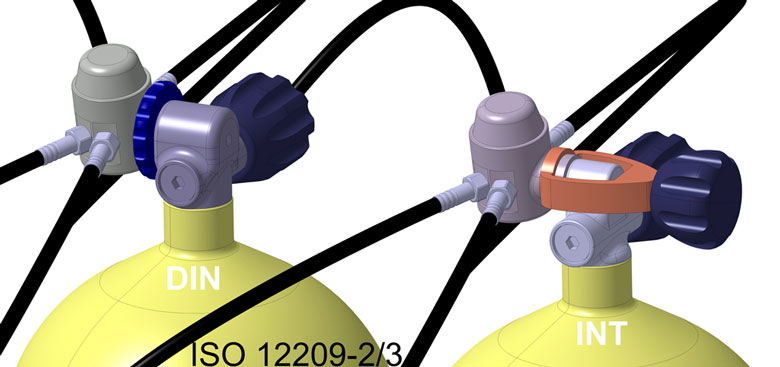
DIN vs. Yoke – The Great Debate
In recent years, I’ve never been on a dive boat in the states or abroad where both accommodations weren’t available. Most major, high-traffic dive outfits will be able to get a special adapter insert into the opening of the bottle to accept your Yoke regulators. However, if you plan on technical diving, it’s a good idea to have DIN regulators for two reasons.
First, DIN regulators tend to be more reliable in regards to blowing O-rings during setup. This is a bit arbitrary since it’s not something that happens regularly with yoke-style regulators anyway, but if you’re traveling a lot, it makes sense to have DIN. The second reason is “roll-off.” This is where the yoke-style regulators can make contact with the ceiling in an overhead environment, causing them to loosen and either leak or blow off the bottle.
There are many “accounts” of roll-off occurring, but I’ve never seen it and I genuinely doubt that it’s reasonably possible. It’s been compared to opening the door on a commercial jetliner; the pressure makes this an exercise in futility. If you plan to further your training later on, then it’s a good idea to use DIN regulators.
This also applies to anyone that has cavern or shipwreck certifications, as you’ll be in an overhead environment. It’s really a “better safe than sorry” approach to regulator selection and it also depends on how much time you plan to spend in Europe.
Titanium vs. Stainless
There are several manufacturers out there that ship special warnings for anything they produce with titanium. The metal has a very low ignition point when exposed to a 100% oxygen environment. This makes the titanium regulator unsuitable for decompression stage bottles. Again, if technical diving isn’t in your future, then it’s extremely unlikely you’ll exceed the 40% environment which makes titanium a perfect option.
Travel is a typical selling point for this type of regulator since it’s lighter. I’m not convinced, but if you’ve ever been held hostage and forced to pay those baggage fees at the airport then I say go for it.
Stainless steel regulators will work fine for all purposes in diving. When it comes to the material for recreational use, the most important aspects are cleaning and maintenance.
Seriously, clean your regulators after you dive and they won’t fail on you. Have them serviced every year (or whatever interval the manufacturers recommend).
Material aside, regulators don’t commonly fail in technical dives or recreational dives alike. There’s a very real possibility that you’re just paying more money for something you don’t need, but that decision isn’t mine to make.
Second Stage
Second stage regulators are the piece that you’ll physically breathe on during the dive. It’s the industry standard that at least one second stage regulator is included with the purchase of your first stage. You may be required to purchase the additional regulator for use in the dreaded “out-of-air” scenario.
Atomic, Scubapro and Mares all offer excellent “safe second” options. The safe second style of regulator replaces the inflator mechanism on the BCD with a regulator and purge/vent valves. In the event of an emergency, the person with gas uses their own safe second device and donates the primary first stage to the diver in distress.
For those that stress failure points, the safe second may not be a good choice. Having two regulators on a single bottle is kind of a “no-no” in technical diving anyway, but I see the appeal in recreational diving.
Safe Second variants will trim the rig so that it’s more streamlined in the water and will also help reduce snagging stray hoses during the dive. For more information on keeping your equipment organized and streamlined, check out this article.
Manufacturers
I cringe at the thought of having to select just one or two brands to recommend to anyone. I can say this, I use Hollis DC1 and DC3 regulators for stage bottles and I use the manufacturer provided O2/Diluent regulators onboard my Closed-Circuit Rebreather. My Draeger units force me to use the proprietary Draeger regulator, since updating the machines isn’t a priority for me.
With this said, having my Draeger regulators serviced is exhausting, as no one knows how to do it anymore. In fact, I had to take a class to service them properly myself. Hollis recently discontinued the regulators I presently use and then they sold their company. Service may become difficult in the future, but only time will tell.
You can’t base your purchases off whether or not a company is going to sell off or discontinue their line of products. It happens quite often and sometimes causes problems like I mentioned above for divers. Based on companies that have remained solid through the years, I can say that Aqualung (and APEKS), Scubapro, Zeagle, Atomic, Mares and Poseidon are all fantastic options. This is of course not an exhaustive list. Sea Elite, for instance, has existed since well before I began diving. The problem is that very few shops carry their products and this can sometimes deter them from servicing your regulators.
Computers
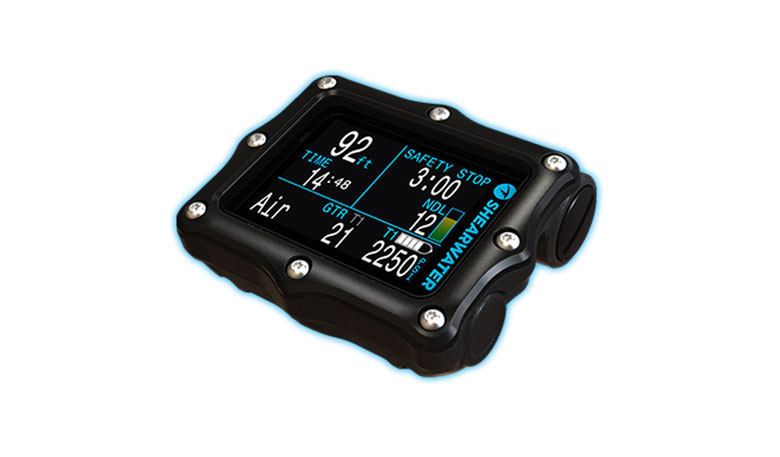
If you do an online search for “Dive Computer,” your computer or phone may explode from the amount of results. There are so many options for these devices that it can be exhausting to select the best one. Stop and think seriously about your goals and your needs. What do you need now and what do you want to do in the future?
Don’t buy a technical computer on a “maybe.” If you aren’t sure, try a less expensive recreational computer like the Mares, Cressi, Suunto or Oceanic puck variants. This will suffice until you can decide where you want to go with your hobbies. Also make sure to get a computer that handles the gas mixtures you’re diving. Otherwise, you can invest in a more sophisticated console or wrist unit that offers more features for the sake of logging and comfort.
Some recreational computers integrate into your pressure gauge so that they can provide more detailed information on the approximate bottom time remaining. Where most dive computers will display your No-Decompression Limits, these will calculate your remaining time based on air consumption. These computers can cost as much or more than technical computers, but they offer a different set of information. Others have wireless transmitters that will take the place of your high pressure hose on the First Stage regulator and display the contents of your tank on your computer instead.
If you know you’re going to do technical coursework, the industry leader is the Shearwater Research lineup. The Predator is the oldest of their models, with the Petrel being the most popular and the Perdix being the newest. There are other popular devices out there from DiveSoft and DiveRite. Naturally, there are many technical models from the recreational suppliers as well. The Scubapro Galileo Luna for instance, can manage three different breathing gases and features a wireless transmitter for gas pressure management.
The thing to consider when discussing mixed gases or managing multiple gases is that there’s more training necessary before these features can be accessed. When you get to a technical level, it’ll be best to discuss these items with your instructor as they’ll have the best information available for technical computer choices.
Consoles, Gauges and Hoses
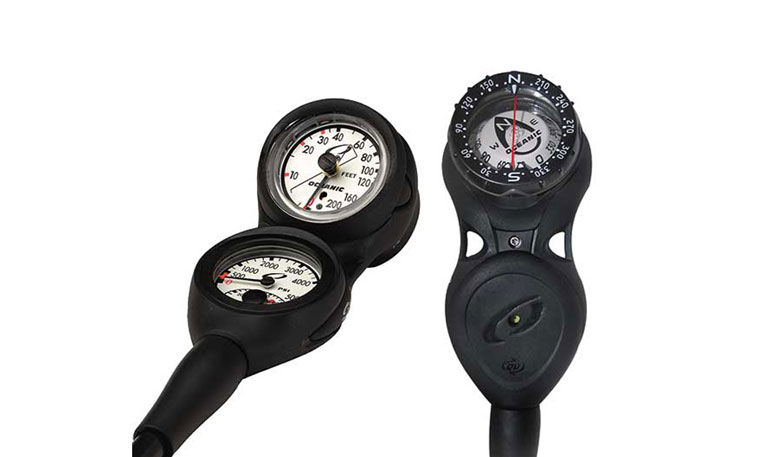
This equipment moves into a realm of completely personal preference and nothing in science or universal comfort. Our dive group is a fan of braided or Miflex hoses for our equipment. These hoses are braided with kevlar or polyester to improve their strength underwater.
Having cut a rubber hose during a dive, I also support the braided hoses for my kit. They’re more expensive and they only last about an extra season compared to standard rubber hoses, but I find the added security nice. Both rubber and braided hoses are available in multiple colors for decoration or coordination of gases. I say that with a caveat; technical divers usually just use black hoses for everything except Oxygen. Those are normally green.
Whether you use a console and which one is entirely up to you. Consoles like the Oceanic SWIV or Oceanic Pro Plus 3 are a great choice for streamlined recreational gear. Others may prefer a wrist unit with a “lollipop” pressure gauge and a compass board or wrist worn compass. Whatever you prefer to use, don’t buy the cheapest thing you can find. I’ll never understand the desire to experiment with life support equipment.
Buoyancy Compensation Devices (BCD)
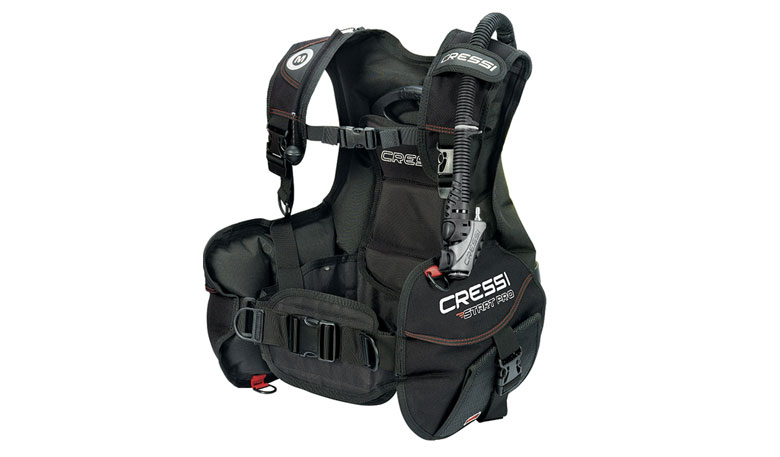
There are quite a few variants in the realm of BCD selection. These options include Back-Inflate, Jacket-Style, Horse Collar, Side-Mount and even those life jackets on airplanes. First, if you’re asked to wear a life jacket on an airplane, you’ve got bigger problems than your SCUBA gear selection. If you use a horse collar BCD, then you don’t need this article to help you and I thank you for your Military service.
I’m going to discuss the back inflation systems and the jacket systems in greater detail here, as these will be your primary options for BCD selection as you enter into and progress in diving. I’ll explain the side mount systems briefly so that you can develop a better idea of where you want to go with your dives.
The Jacket-Style BCD
They say that necessity is the mother of invention. I’m not sure who needed to be in a head-up position while they were diving, but it seems to have gained a lot of traction. It appears, unfortunately, that the jacket-style BCD is here to stay. I’ll do my best to dissuade you from purchasing one of these devices, but comfort and safety have to be your priority.
There are hundreds or maybe even thousands of variants out there for a jacket BC. They all work very similarly, with basically all of them offering some method for dropping weights. They feature an adequately-sized air bladder to compensate for depth and feature multiple D-Rings for attaching cameras, lights, slates and many other arguably unnecessary items. They also offer something unique to the jacket BC and that is, very simply, a head-up trim position.
There are videos on YouTube with seasoned divers showing that it’s possible to maintain good trim and buoyancy with these devices, however these guys are not new recreational divers. The jacket allows air to work into the areas around your waist and lets the diver feel comfortable dropping their feet. The problems here range from inefficient kicking (or kicking the reef) to massive training scars. Most of the divers that I know in the technical world agree that the jacket-style BCD is the biggest scam in the diving industry.
I did mention that it’s possible to maintain a good trim position with these devices. If you’re a recreational diver and you feel comfortable in a slightly head-down position with your jacket BCD, then keep doing your thing. Remember to get the tank higher up on your back so that the hoses are at a comfortable distance and to ensure you’re not in the head-up position that I harp about so much.
If you’re paying attention to where the air is collecting in your BCD, then you can shift the rig around so that the air in the side pockets will support the weight of the tank on your back. Commonly, the air enters the bladder near the diver’s shoulders and stays there, causing the feet to drop.
Before you guys start yelling about the comfort and safety of a jacket-style BCD on the surface, either before or after a dive, remember that you’re diving. You (hopefully) didn’t pay that charter $120 per person to float around on the surface in your dive gear. That being said, if you’re an advocate for the jacket then you likely also have a snorkel on every dive.
The snorkel renders your initial argument invalid; use your snorkel and stay face down. Everything you want to see is underwater anyway. If you’ve done the right thing up to this point, then you also have a method for monitoring air consumption and should be on the surface with plenty of gas to facilitate a face-down approach to the boat.
I want to make a point that this style of BCD can mean the difference in whether or not someone chooses to dive. I’ve seen many people sitting on the surface before a dive complaining that they are simply overwhelmed and that they need a moment to think through the dive.
If your wife (or husband, they’re out there) is extremely uncomfortable in the water, the reduced stress that can come from sitting comfortably on the surface may make the difference between an enjoyable experience or a panicked exit from the water resulting in injury, divorce or death.
My advice, probably don’t buy a jacket-style BCD unless you know you’re going to be comfortable trimming the device properly or if you plan to travel extensively for recreational dives. The reduced weight can be beneficial when it comes to paying those unnecessarily high baggage fees for your vacation to Cozumel.
The Back-Inflate BCD
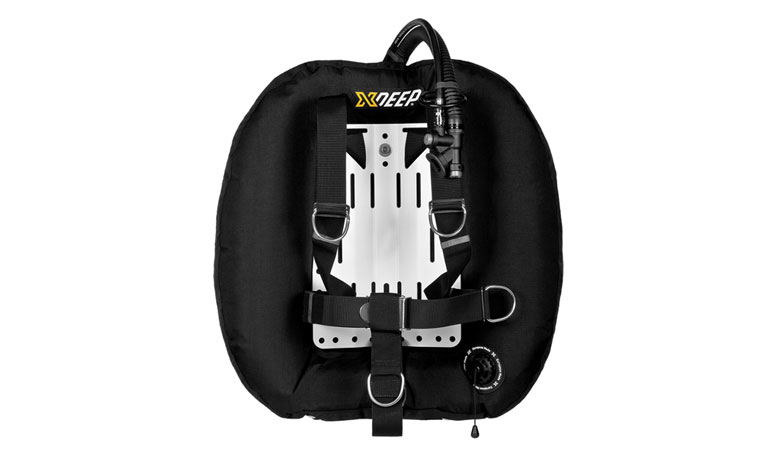
There are two kinds of back wing BCDs. The technical flavor features a 10′ – 11′ (~2.7 meters) single piece of webbing, a stainless, aluminum or even carbon fiber plate and an air bladder typically between 38 and 80 lb. of lift. There are four strategically placed D-Rings used for accessories, bolt snaps, lights and stage gases; one on each shoulder and one on each hip. Typically you’ll need a second weight belt if you’re diving recreational.
The other type is a harness that’s very similar to the jacket-style BCD, with either a plastic back plate or no back plate at all. These devices are a recreational version of their technical counterparts. Many of the manufacturers refer to these rigs as “technical” BCDs, however that’s not really the case. For instance, I have mounted doubles and even an SCR machine to a Zeagle Ranger in the past. During these dives, one quickly learns why they’re not the preferred method for technical diving.
The back mounted wings make trim much easier to maintain. This aids in buoyancy control and conserves gas needed to constantly adjust your position in the water column. These rigs tend to be a little more streamlined on your side and chest as well since the air bladder has been moved to your back.
However, this creates a different problem for recreational divers than they’re used to on the surface. You’ll find that floating comfortably on the surface is extremely difficult if you don’t have a CCR and stage bottles or a set of doubles on your back. This can get tiring as you fight to keep your feet in front of you, so make sure you’re hitting the gym like you’re supposed to.
In order to differentiate between whether you want a technical BCD or a recreational back-inflate BCD, simply consider your goals.
They’ll cost roughly the same price of around $600 and they’ll both offer immediately improved trim position and offer more points for adjustment in many cases.
If you have a strong suspicion that you’re going to be trying to get a pair of OMS 112’s on your back, then I suggest you select a technical harness. If the idea of spending 4-6 hours in the water isn’t something you’re into, then consider the standard recreational variant. Remember that the recreational versions are not going to be welcomed in the technical community. It’s not because they hate you, it’s because “it’s been done and it failed.”
My advice is grab a technical harness. You’ll benefit from the streamlined setup of a backplate and harness by reducing drag and improving buoyancy and trim in the water column. They offer unlimited potential for growth at the same price tag as a recreational BCD and they’re perfectly customized to suit your specific body type/size.
Setting up for a dive becomes much simpler as well. Everything is visible and accessible to you so forgetting items becomes less likely. Don’t let the dive shop talk you into getting one for you and your uncomfortable partner/buddy. They likely need something that lets them sit comfortably on the surface in those stressful moments before a dive.
The simplest method for choosing a BCD before buying one is to ignore the sales pitch and rent one of the things. Rent different rigs for several dives so that you can get a good feel for it. Unfortunately, I haven’t seen a shop that rents technical harnesses, but you can get a good idea for how they function with a recreational back-inflate rig.
Also, addressing “technical harnesses are uncomfortable.” No they’re not. They’re uncomfortable if they’re not adjusted properly.
Masks
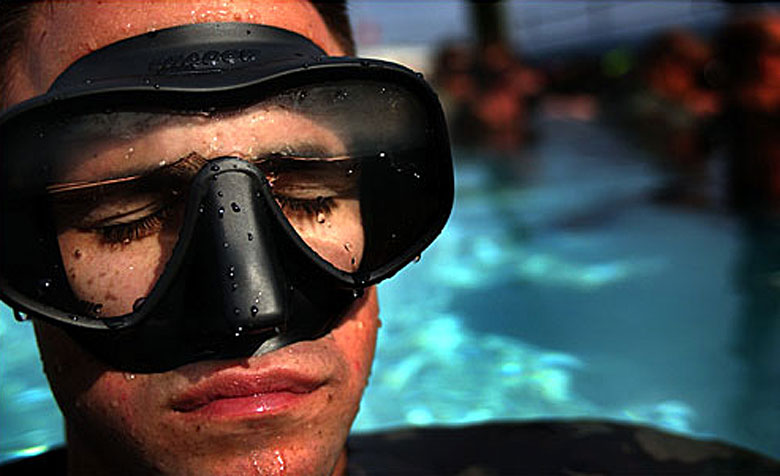
I don’t need to list manufacturers or types of masks here to give you the rundown on which mask is the best. Find a color you like. Press it to your face without the strap and inhale through your nose. If it stays there, it fits. If you feel pressure anywhere like the bridge of your nose or a pinching sensation on the corner of your eyes, it doesn’t fit.
Look around the shop and take in how much of the frame you can see. Are you comfortable with the view? Good. The price and manufacturer of the mask is, for the most part, irrelevant. You need comfort and solid construction. You don’t need gimmicks, but seriously if anyone uses that mask with the computer in it, I’m interested in how you like it, so leave a comment below.
Fins
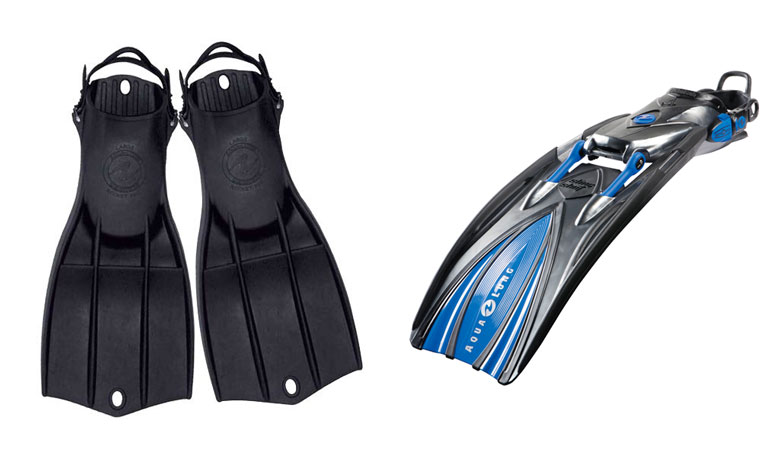
“Well, mine are better than yours because [insert your reason here].” I personally use a pair of Cressi Space Frogs that I bought at a dive shop tent sale for $20 back in 2013. The only real piece of advice I can offer on fins is to make sure they’re simple and that they fit. Hollis F1 fins, for instance are very popular. They offer some vents that claim to increase thrust output by angling the flow of water in such a manner that makes them more productive. They’re also astonishingly heavy due to the high strength construction. The guys I’ve seen using them have to adjust their rig on their back to counter the weight of the fins underwater.
This doesn’t need to be a complicated process. A simple, flat or vented fin with an open heel is exactly what you should look for. Aqua Lung makes some incredible fins and then they also offer some questionable designs. While allegedly based in science, I see the slingshot fin as an added failure point. The Rocket II fin on the other hand offers an eyelet to clip your fins to your gear as you’re moving out of the water.
If you’re going to be freediving, remember that there’s a fin for that as well. The Cressi Gara is a favorite among freedivers and spearfishermen alike due to its massive profile and ability to generate thrust.
Whatever you decide on fins, I recommend that you keep them simple. Also consider adding spring straps to replace those rubber adjustable straps that come with them. These will often provide a clip-off point for your fins and will also dramatically increase the ease of use in the water. Just make sure you get the adjustment right or you’ll have them flopping around for the whole dive.
Knives, Lights and Snaps
We don’t need to go into much detail here. Bottom line is carry a knife or shears (or both) on every dive. Bring a small BC-mounted light for good measure. Also when you buy your bolt snaps, remember to buy double-enders or standard tech bolt snaps. These other clips are referred to as “Death snaps” because they can be frozen shut underwater. This poses a problem for any diver and it is never properly addressed. Don’t use anything with a one-way gate on it and never attach them through a hose or in a metal-on-metal fashion. You’ll want to use paracord or cave line to attach these items so they can be cut away if necessary.
As for knives, pick one that works for you, but don’t put it on your leg. The only people wearing their knives on their legs are Navy SEALs and beginners. These represent an entrapment hazard and it would be a real shame to be tangled up in the only thing that could solve your problem. Make sure everything is stainless steel or titanium (see our regulator argument from earlier) to prevent rust or corrosion.
Boots, Gloves and Hoods (For the Neoprene Ninjas)
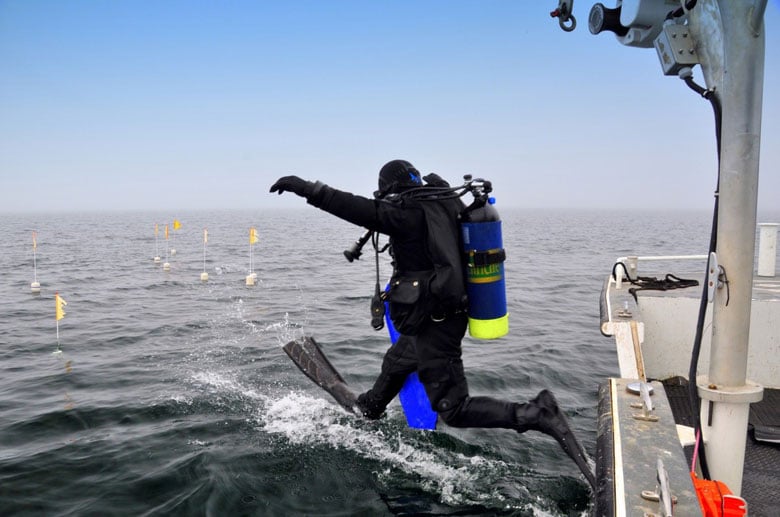
I encourage you to try many variants before making a selection. Hoods should fit tight, but not so tight that they cause difficulty breathing or so much so that you can feel your pulse in your neck. If you’re turning bright red, it’s definitely too tight. If you are able to comfortably move the hood around your head, then it’s probably too loose.
Boots are just like buying shoes. Decide whether your want a soft flexible bottom or a hard sole. These will be determined by the type of diving you plan to do. Walking around on a boat should require only a soft rubber sole, where long treks (in the Catalina islands, for instance) will need a much more rigid sole. Zippers will make everything much easier, but may be an early wear point on cheaper variants.
Gloves can be name-brand designer gloves from the diving industry or they can be Mechanix Wear from the local auto shop. If you need the warmth in your fingers for decompression or for cold water, then find some cold-water neoprene gloves. Gloves should fit you like, well a glove. I don’t even wear them anymore unless I’m going to be in the water for a really long time.
Wetsuits
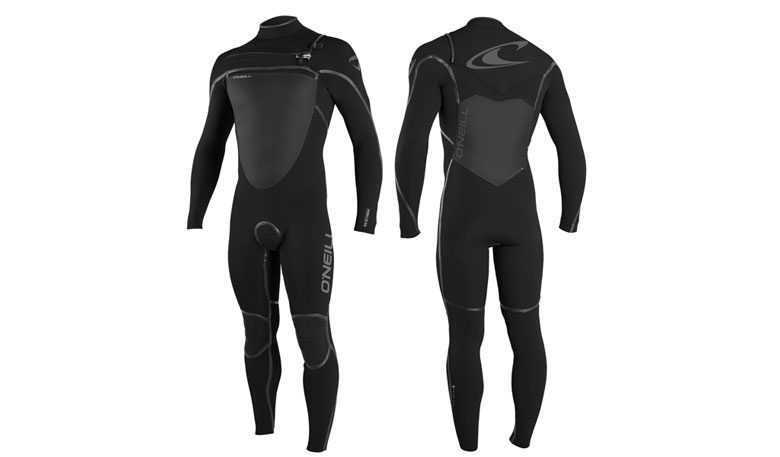
Fit is the most important parameter when discussing wetsuits. This is my opinion and is widely shared with many members of the diving community. While wetsuits come in many different thicknesses, if they don’t fit your body properly then they won’t work efficiently. You’ll want to ensure that the suit is snug and lays flat against as much skin as possible. It’s normal to see slight bunching of fabric in the “bendy” parts of your body, but you want the suit to fit comfortably. The topic of exposure protection has been discussed before and can be seen in this article.
The next thing to consider is thickness. Suits range from 2.5mm up to 7mm in the most common variants. There are definitely exceptions to these mentioned pieces, but for the sake of recreational diving, it’s a good idea to stick to this realm. Basically you can assume that the thicker the wetsuit, the more insulating properties it has. Beyond 7mm in thickness becomes cumbersome and restrictive in my experience.
Signaling
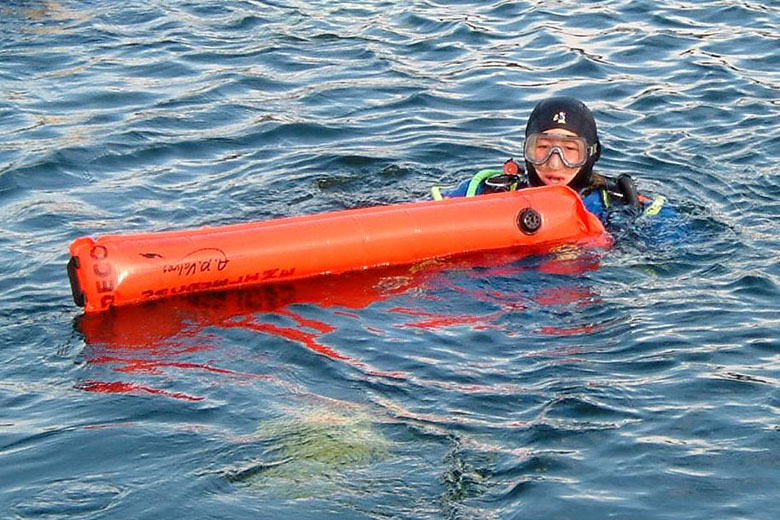
If you’re going to be in the ocean or a large lake where you can’t reasonably swim to the shore with an unconscious person under your arm, then carry a big safety sausage, also called a Surface Marker Buoy (SMB). Bring an emergency whistle too. They’re typically orange and your buddies will give you hell for carrying them, but one of those would have shaved 10-15 minutes off of my rescue when I had DCS. Turns out you can’t yell too good when your lungs are bleeding.
Underwater, bring a slate, a mini slate, a wrist slate, or an underwater notebook, it’s really up to you. Bring something to communicate with people underwater. Don’t make it a big deal and don’t spend a lot of time trying to write a novel to anyone. They’re likely underwater to look at fish and coral, not to read about how cellular respiration is affected at 75 feet below the surface.
Conclusion
At the end of the day, you have to put your comfort and safety at the forefront of your goals. The way I feel about diving may not be the way you feel about it. Don’t let anyone pressure you into anything in this hobby. People are so quick to recommend what’s best for you, but so many fail to remember that you’re using life support equipment to go places humans weren’t designed to go.
Stay safe, but remember that we’re doing this because it’s fun. The moment you lose sight of that, there’s no reason to do it anymore. Consider as many angles and plan for as many problems as you can so that you can leave all of that to habit and just enjoy your dive!
Editor-in-Chief’s Note: Derek Gill has been a Plank Owner here at ITS from the beginning and has an extensive background in healthcare, pharmaceutical research and technical diving. He’s been certified in SCUBA since 2000 and diving technical/CCR since 2010. He speaks several languages including Russian and Spanish as well as several computer languages. These combined skills have opened the door to more creative ventures in Network Security and Physical Security consulting. Derek is a veteran of the US Navy and a former Navy Corpsman who worked alongside the US Marine Corps. His military nickname, “Witch Doctor,” has stuck with him ever since and it can now be found across many internet forums where he takes pride in trolling sensational zealots from multiple industries.






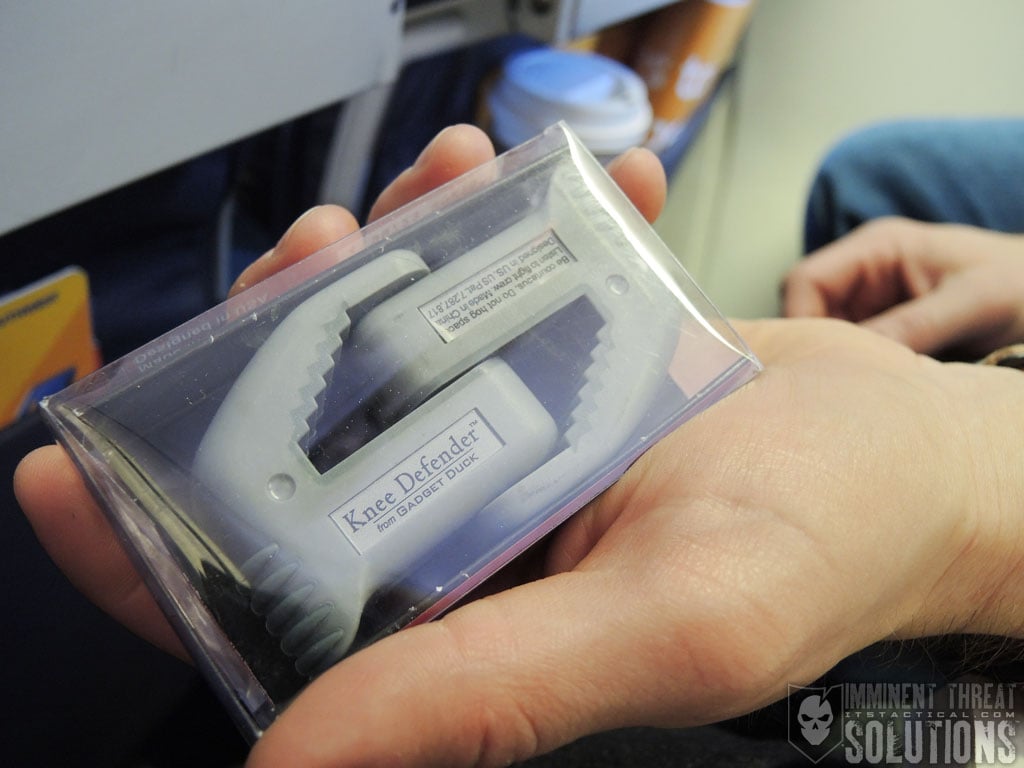

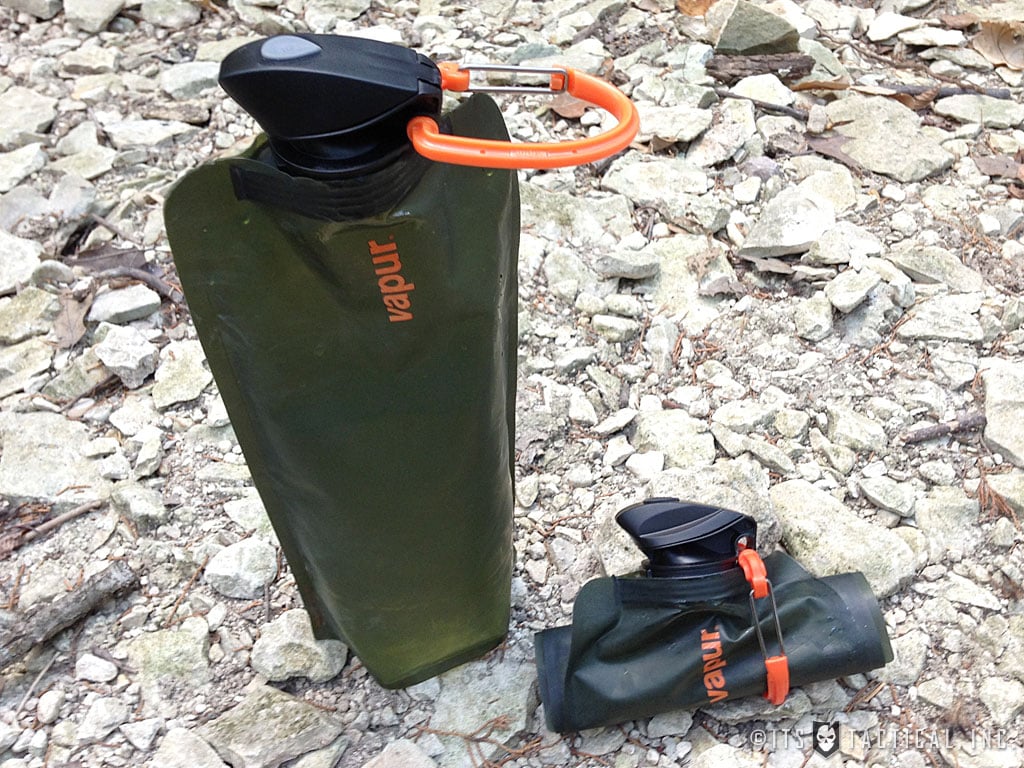

Discussion